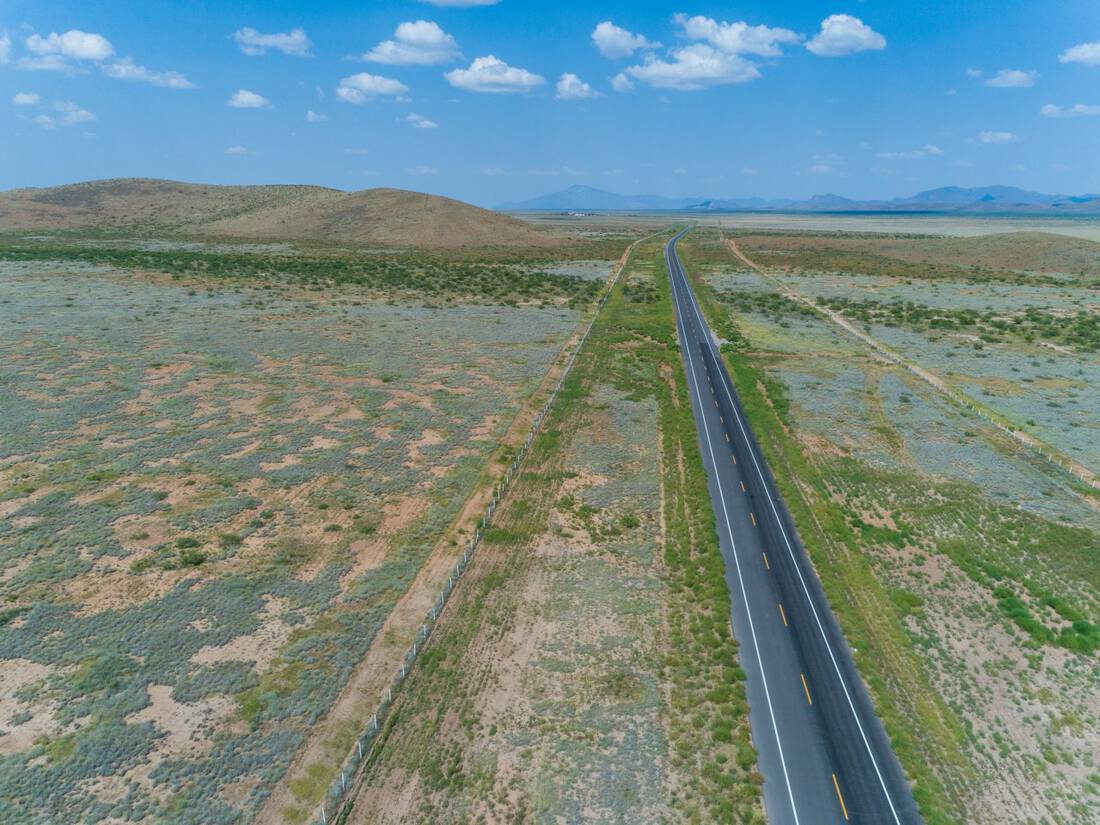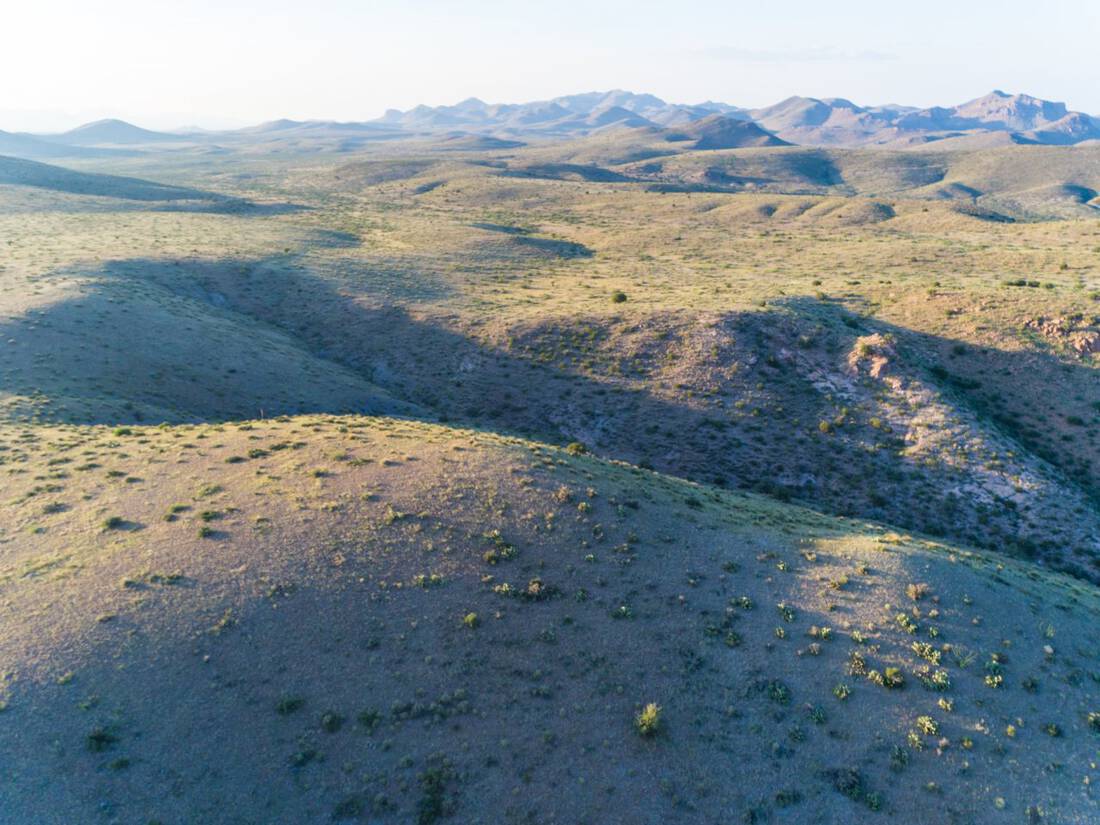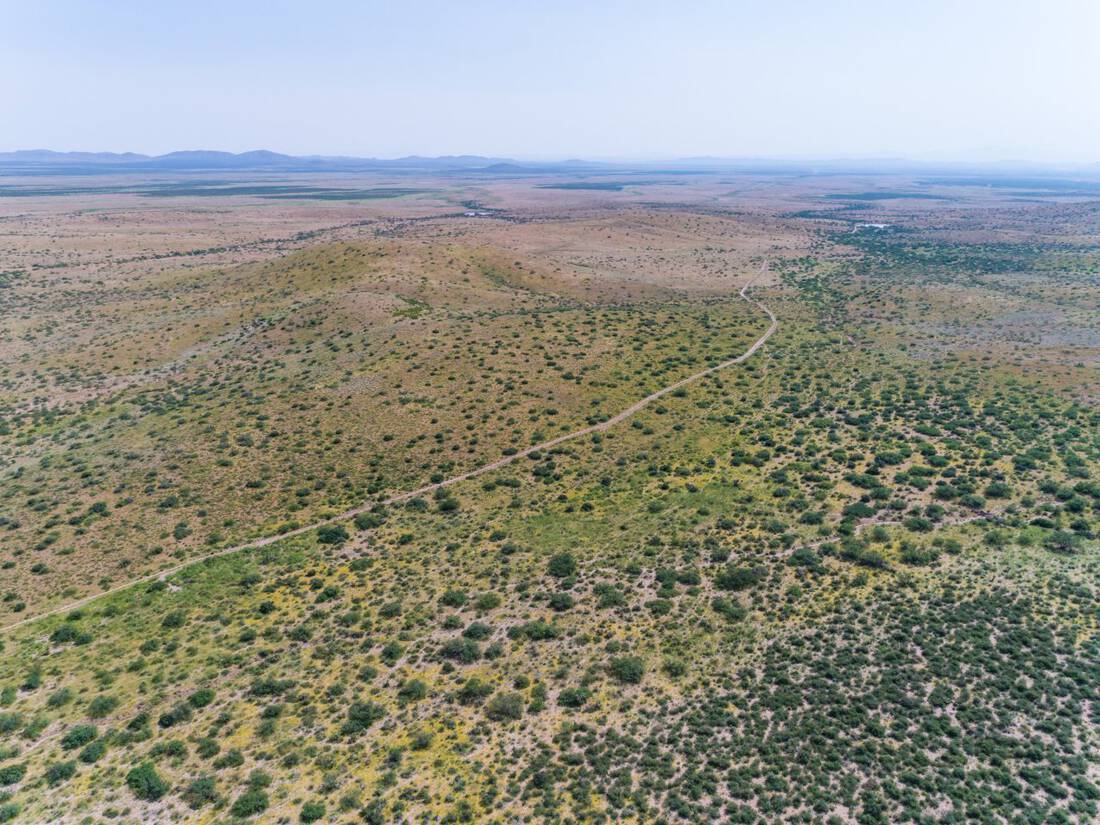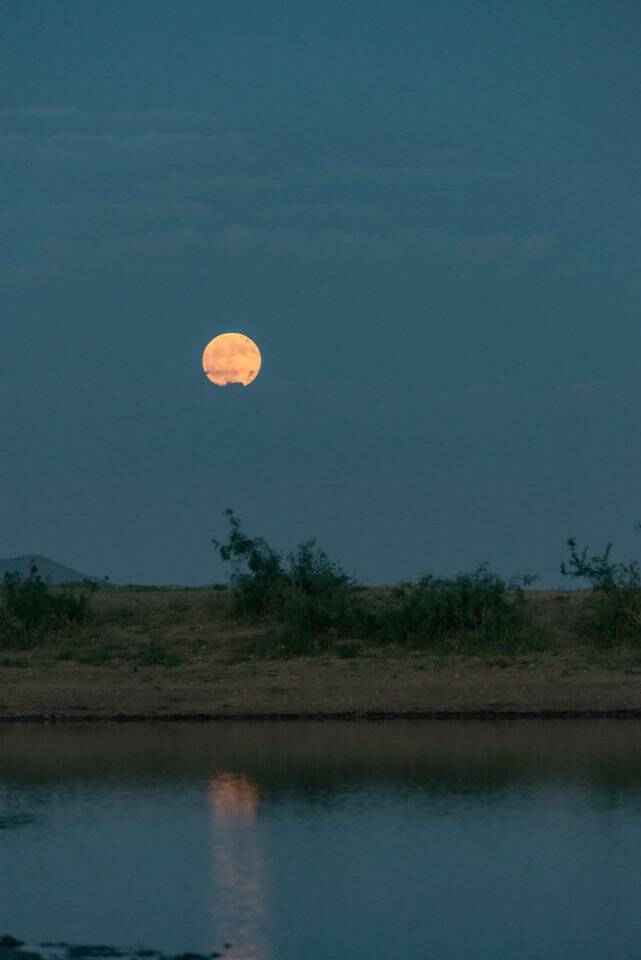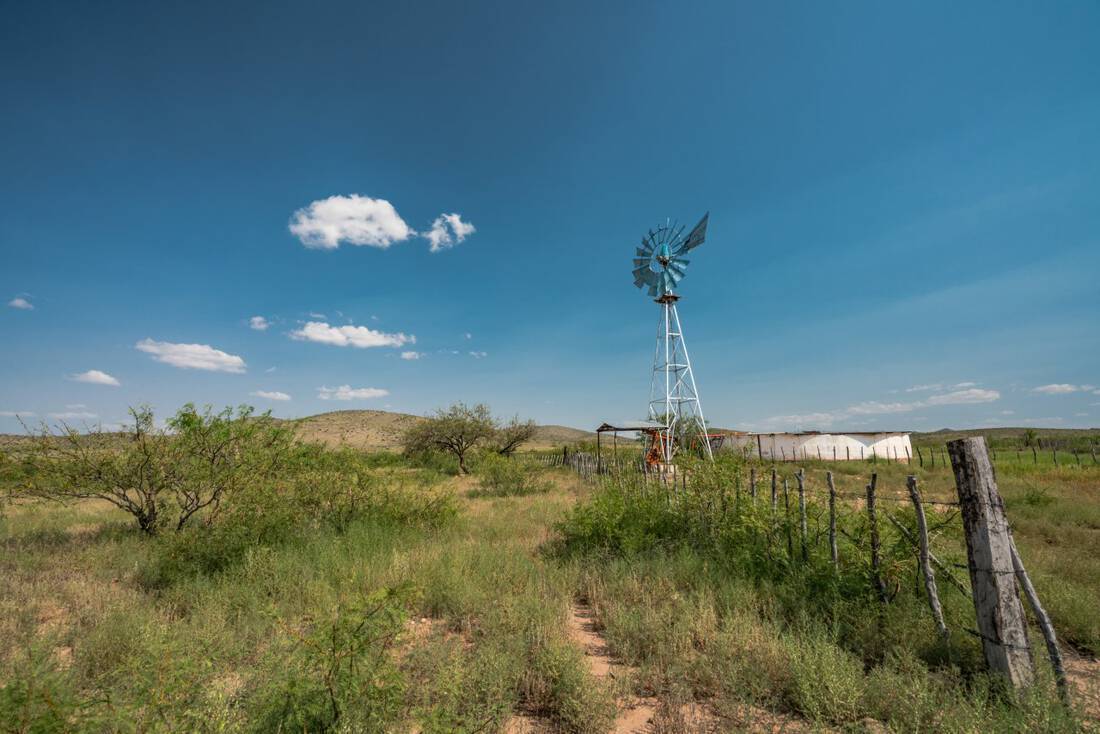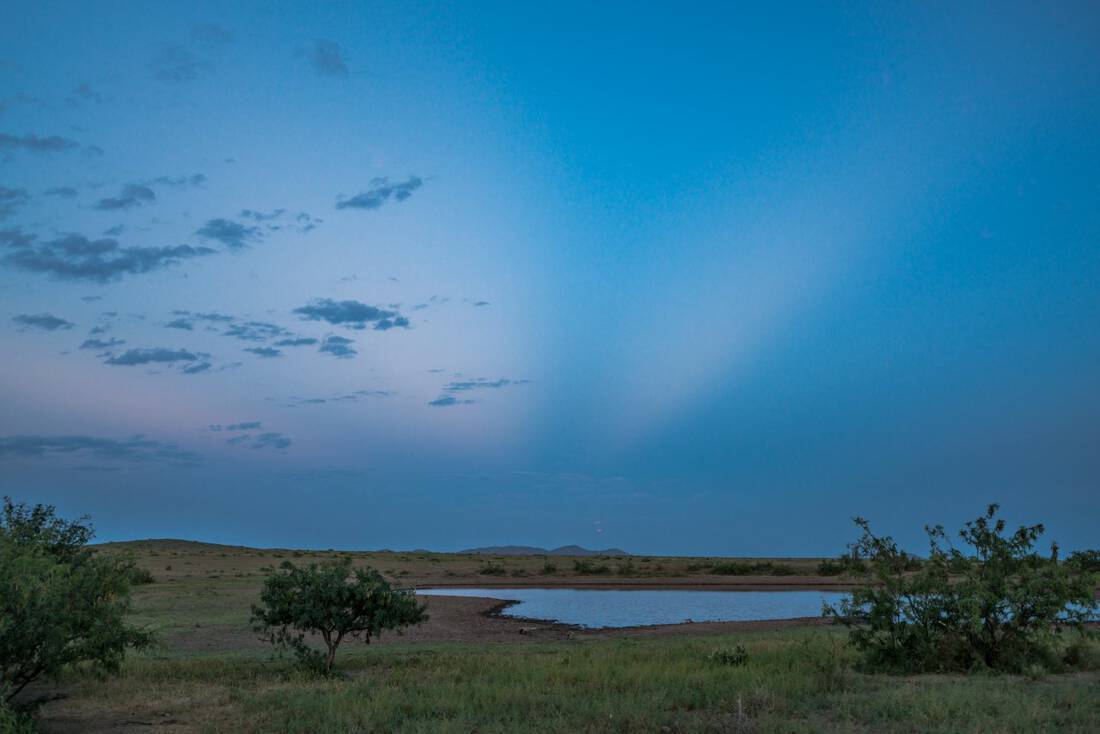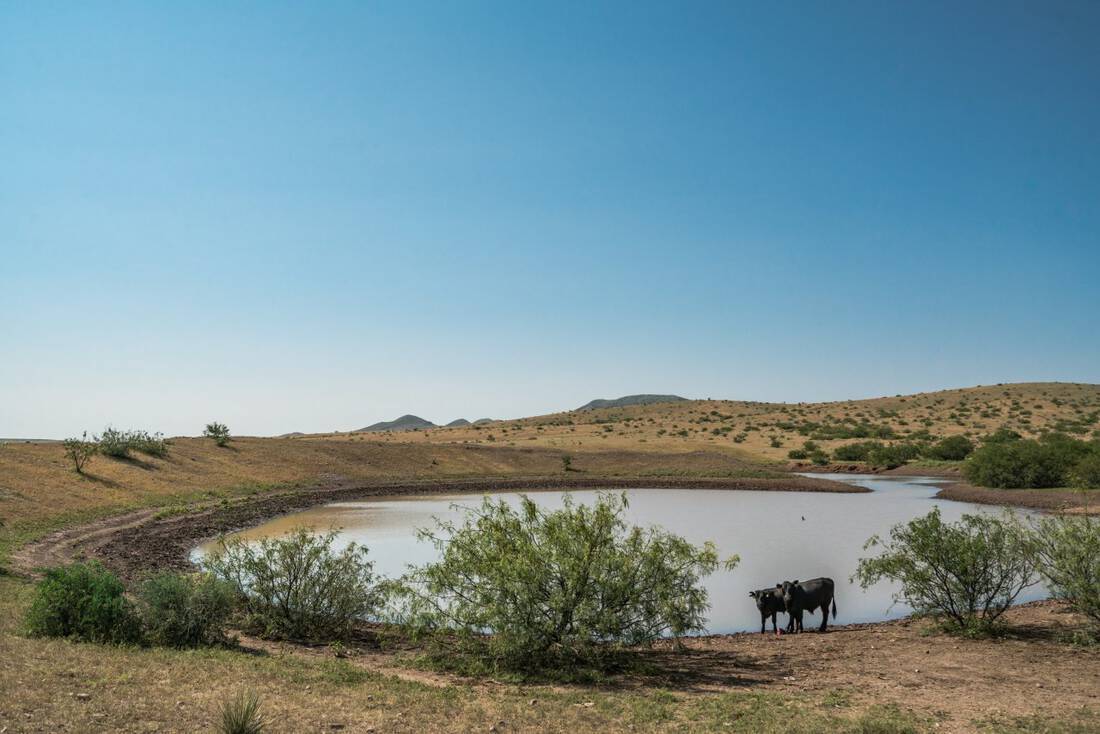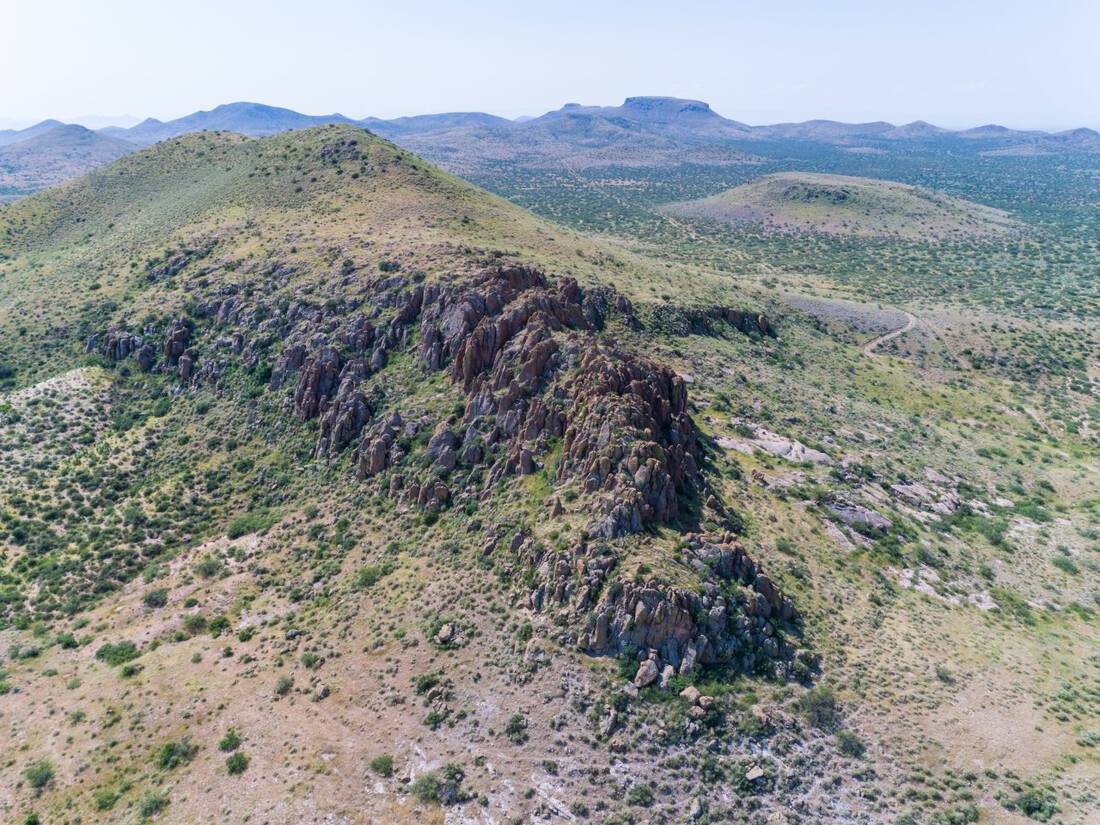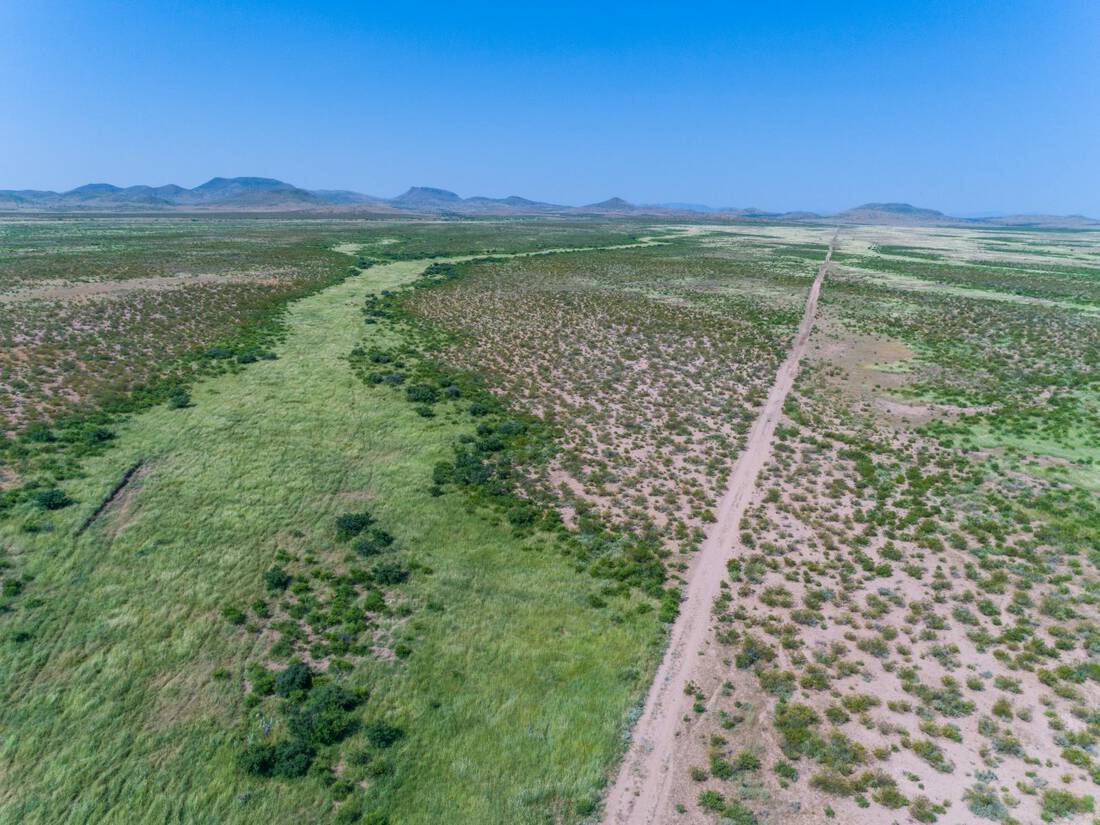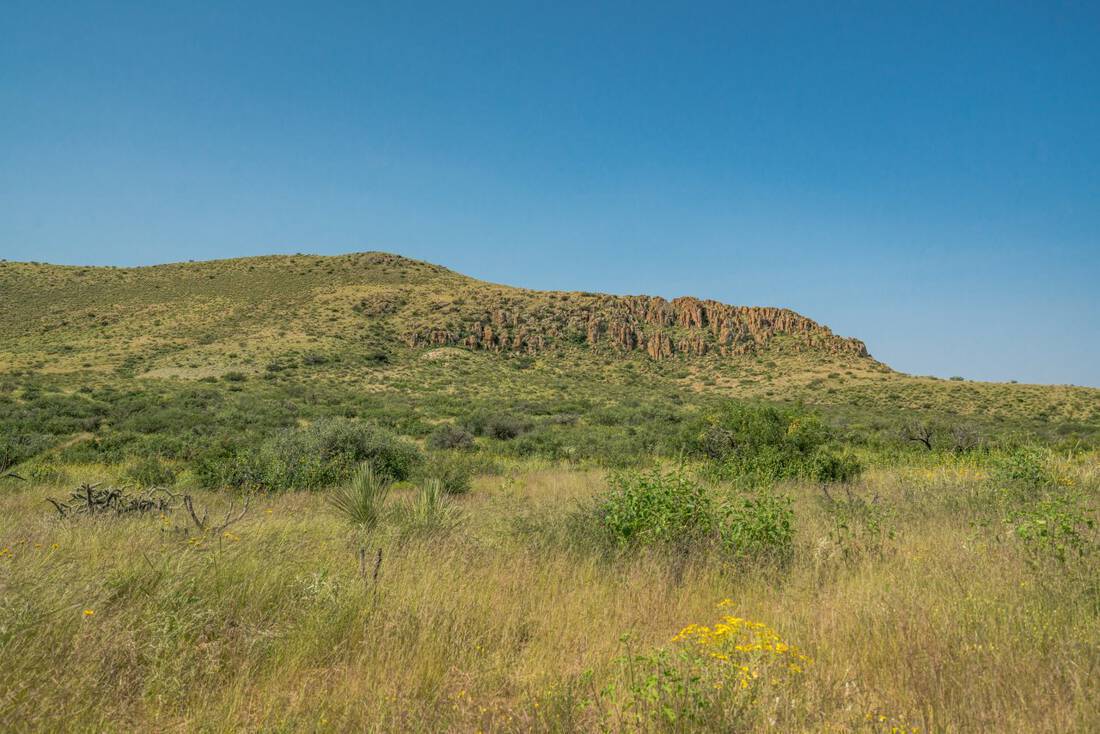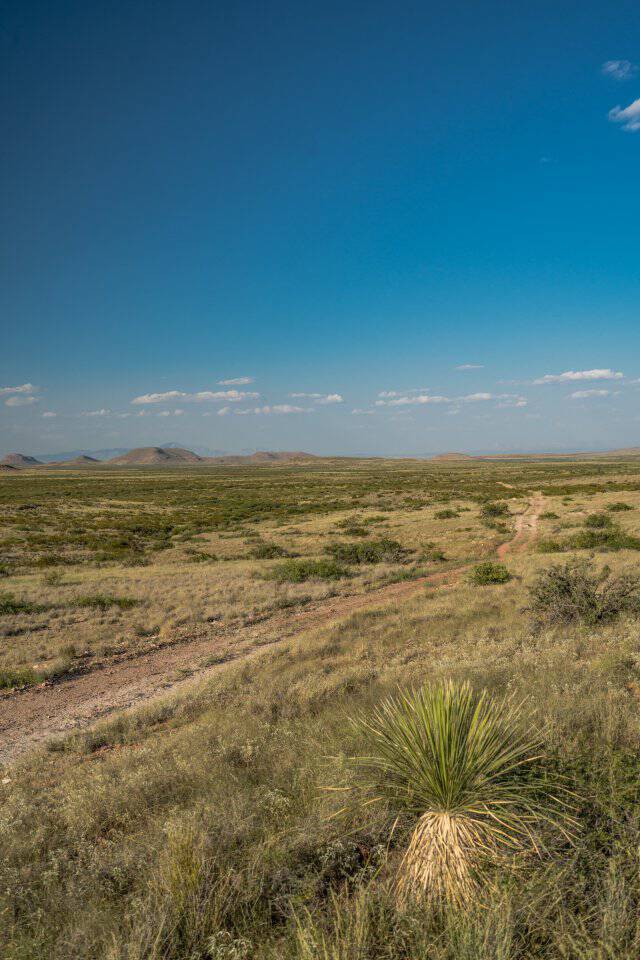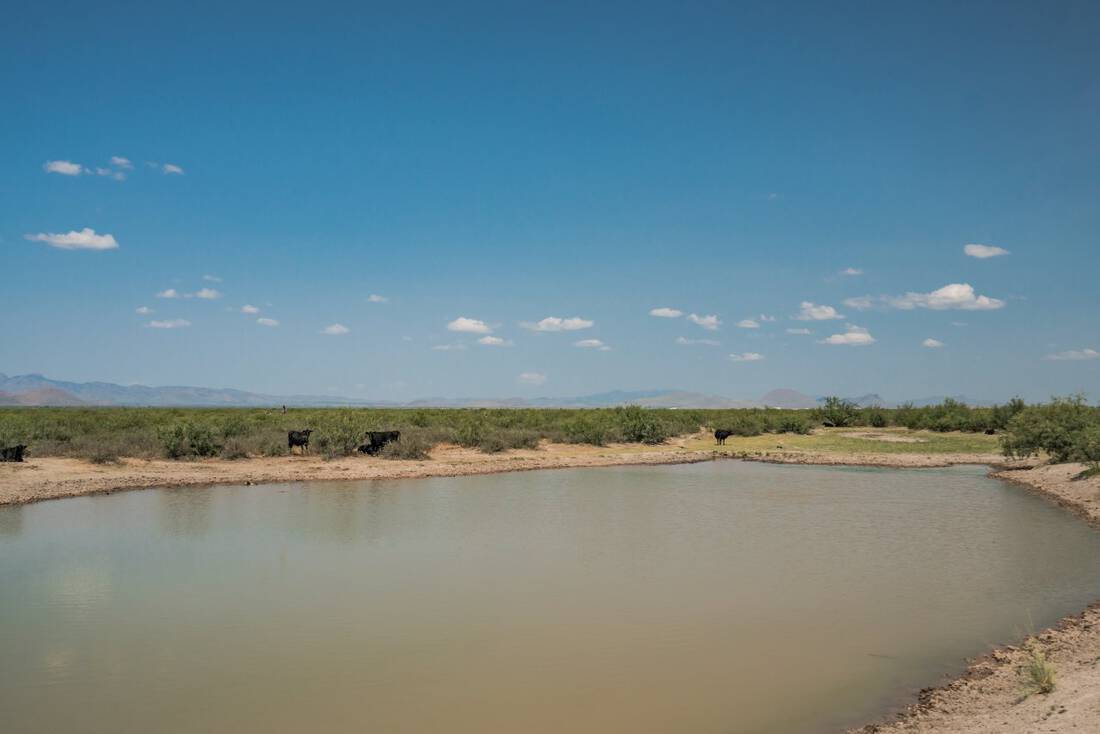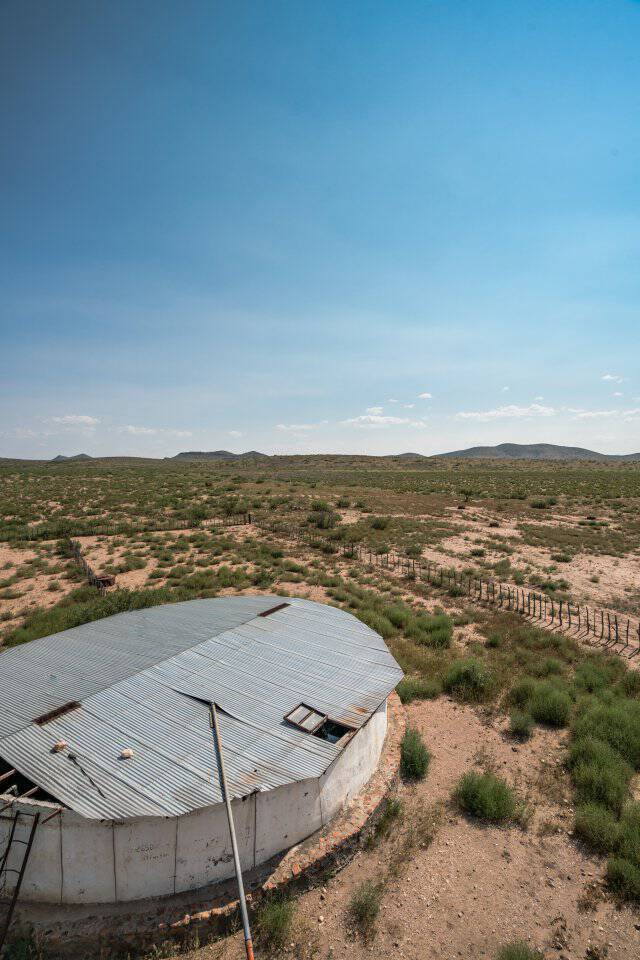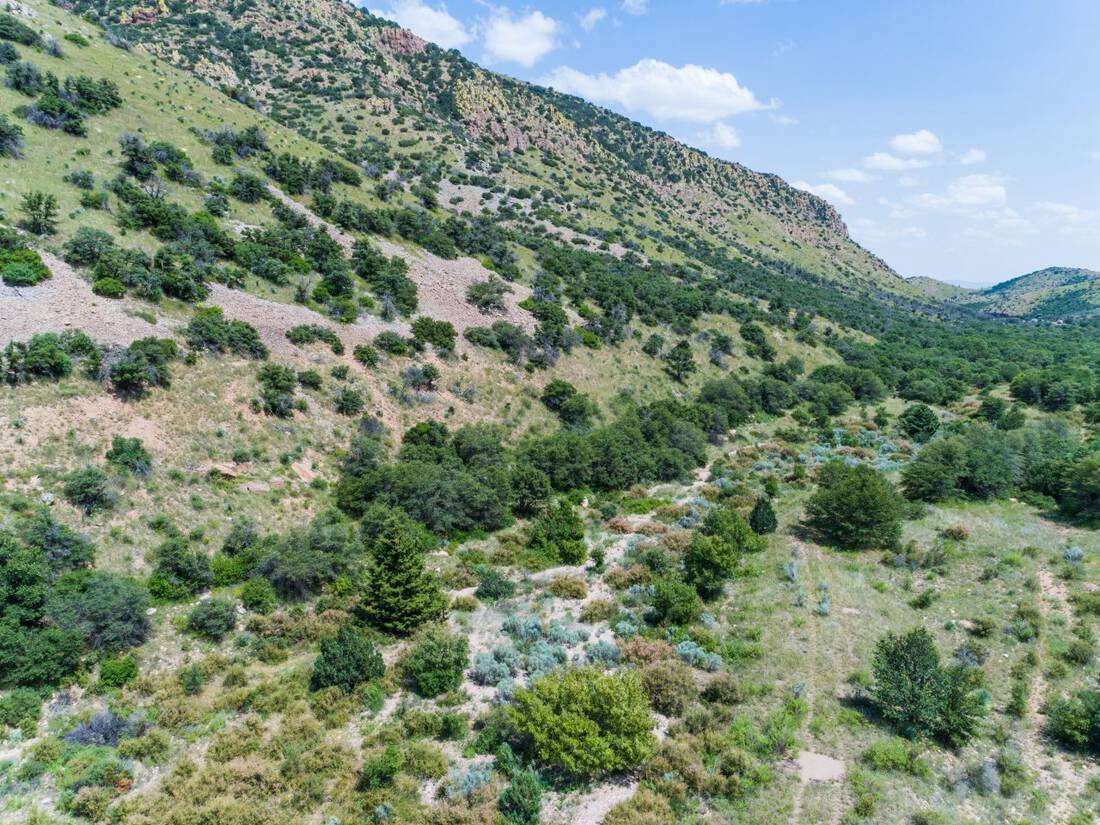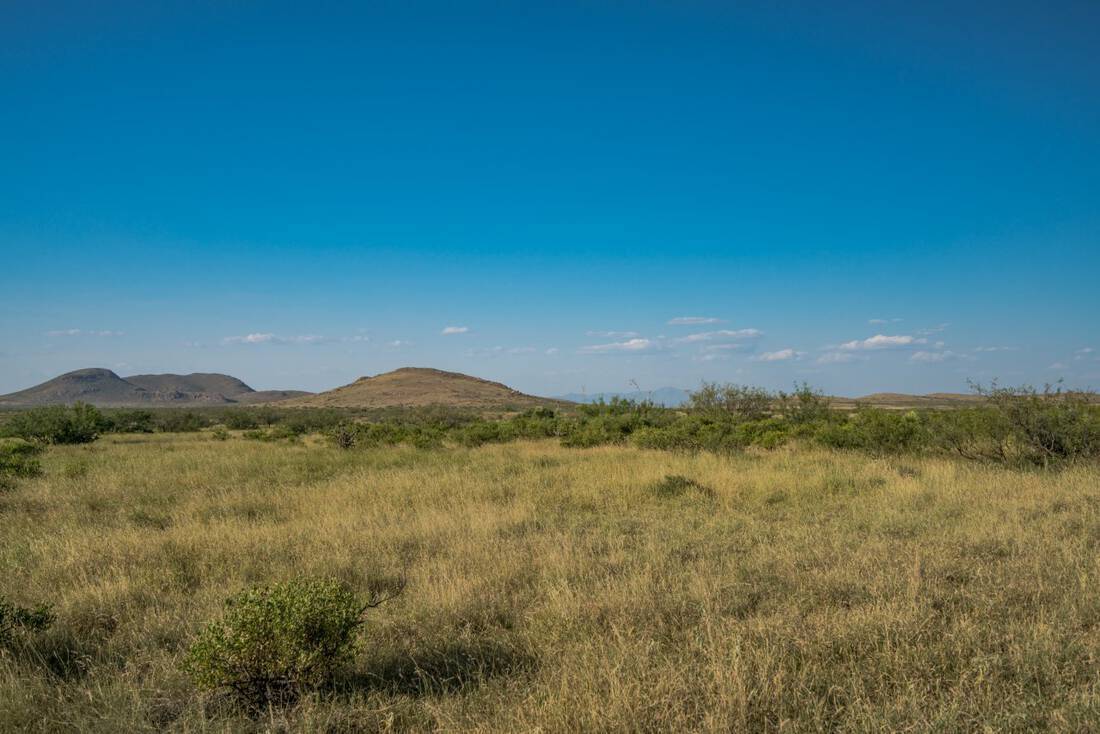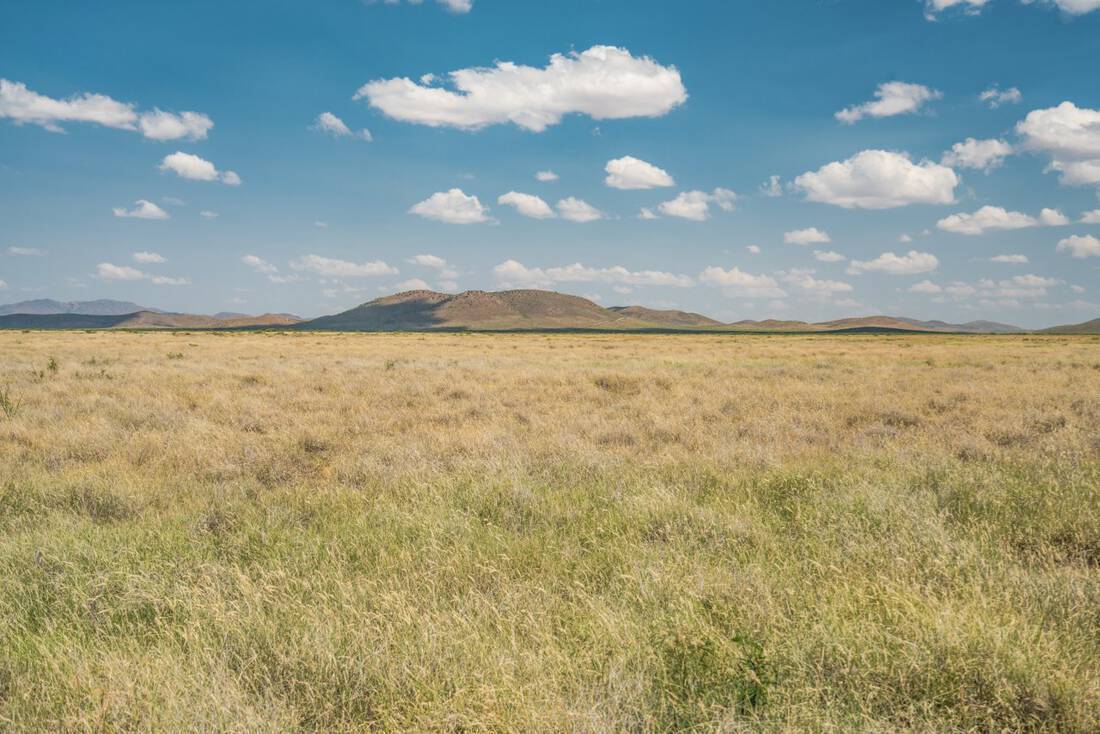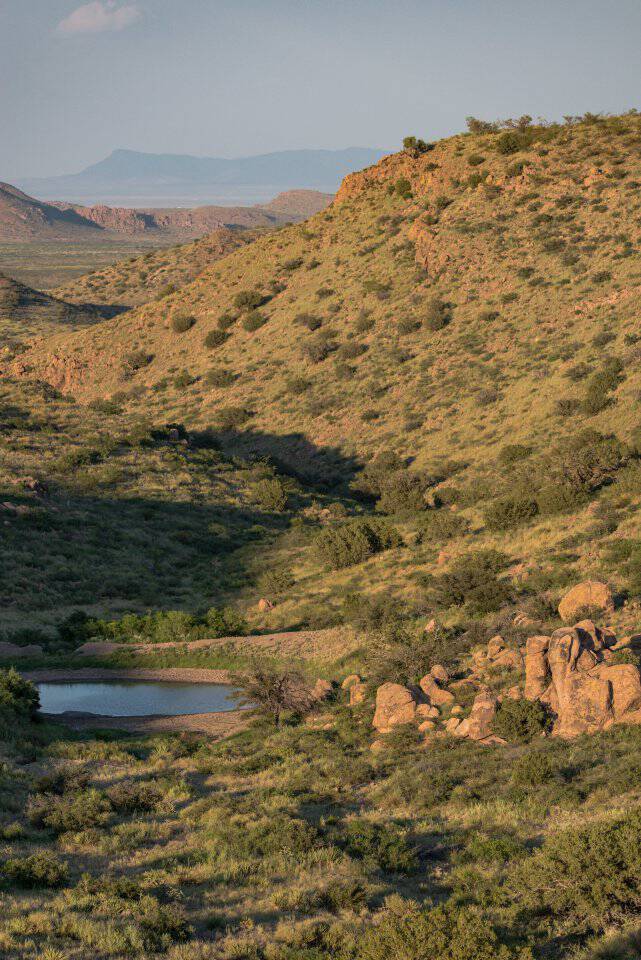It is not often one has the opportunity to purchase a ranch with all the quality characteristics of good weather, large size, quality production, and excellent location. Accessed immediately upon driving across the border from the United States makes it one of a kind. This high Chihuahua ranch lies in a very productive region with gentle valleys and rolling hills and represents some of the most premier grazing country available on the market for the serious cattle rancher.
Location: The ranch is located in the Municipality of Janos, Chihuahua, Mexico about 167 miles west of El Paso, Texas, 247 miles southeast of Tucson, Arizona, and 97 miles southwest of Deming, New Mexico. While actually several large ranches, Nogales and El Palmar, they are marketed and sold as one ranch, only a few miles south of the Mexican/American border in the boot heel of southwest New Mexico. The ranches are accessed primarily via Mexican Highway 2 from the south and New Mexico Highway 81 from the north.
Acreage: Combined, El Palmar and Nogales are spread over approximately 85,002 total acres (34,399 hectares), and are located in some of the best cattle production areas in north-central Mexico. The elevation ranges primarily between 4,500 – 5,400 feet.
Approximately 4,942 acres (comprised of two separate areas) is irrigated farmland with six center pivots on irrigation wells. The 4,942 irrigated acres can be purchased for $10,000,000.
Water: Most of the precipitation falls during the monsoon season, which is July through September. Annual precipitation is about 12 inches rain with an additional 5 inches of snow. El Palmar ranch has 21 wells that are serviced by pumpjack, windmill and submersible pumps.
Stocking: Weather, location, terrain, a wide variety of grasses and vegetation all combine to support an operation for cow/calf, stocker or combination. The stocking rate is about 40 acres per AU. Most of the cattle crossed through the border into the United States originate in Chihuahua, and cattle from the Berrendo area cross into New Mexico at Columbus or Santa Teresa.
Terrain & Vegetation: The terrain is a rolling landscape, with mostly grassland, similar to the far West Texas area of the Davis Mountains. This gives the northern regions of the state about a 7:1 proportion of grasslands to agricultural lands. Premier side oats, and gramma grasses, considered to be drought tolerant, provide excellent grazing. Tabosa grass is also very prolific on these ranches.
Weather: Winters are cool and sunny with a January average high of 45 °F and occasional snowfalls. Summers are warm with June being the warmest month with an average high of 72 °F. The climate in the state of Chihuahua, Mexico, is semi-arid to arid. The rainfall pattern is intermediate in the border belt with the peak months of precipitation being July through September. The rest of the months are considered dry periods in the state of Chihuahua. The growing season typically begins in July with the monsoon rains and lasts until the first freeze, normally in October or November. If there is fall and winter moisture a variety of late winter and spring plants are grown including filaree and other high protein plants.
Minerals: The minerals are owned by the country of Mexico.
Ranching in Mexico: The Mexican Constitution regulates the ownership of the land and establishes that “…in a zone of 100 kilometers along the border or 50 kilometers along the coast, a foreigner cannot acquire the direct ownership of the land.” These areas are known as the “Restricted or Prohibited Zones”. However, the latest Mexican Foreign Investment Law, which became law in 1993, makes allowances. Non-residential property can be purchased through a Mexican corporation which can be, under certain conditions, 100% foreign-owned, with a provision in its by-laws that the foreigners accept to be subject to Mexican laws and agree not to invoke the laws of their own country.
History: The Casas Grandes/Janos region of northern Chihuahua has long been recognized as a place of great cultural diversity. Over the years, the region has been occupied by the inhabitants of Paquimé, Tarahumaras, Spaniards, Sumas, Apaches, Americans, Chinese, and of course, Mexicans. Álvar Núñez Cabeza de Vaca was the first Spaniard to visit the area. Two additional groups, Mennonites and Mormons, came south into Mexico to avoid persecution for their religious and cultural practices. Their methods of farming are very advanced, using the latest technology and boosting the agricultural economy in the region.
Region: Janos is a municipality located in the extreme northwest part of Chihuahua, on the border with the Mexican state of Sonora and the U.S. states of Arizona & New Mexico. As of 2010, the municipality had a total population of 10,953. Founded around 1580 by Franciscan missionaries, the municipal seat is the town of Janos. Casas Grandes, located about 37 miles south of Janos, is the most important archaeological zone in Chihuahua. The great Puebloan community of Paquimé was the center of the Casas Grandes culture for over 300 years, reaching the peak of its power in the 13th century. It is believed that the population of the city reached 10,000, with most inhabitants living in five- and six-story “apartment” buildings. Featuring small T-shaped doors, a ceremonial area, temple structures, a ball court, ceremonial pyramids and a cross-shaped mound with perfect astronomical orientation, the Paquimé ruins spark wonder and admiration.Between AD 300 and 1300 along the wide, fertile valley on the San Miguel River the Casas Grandes (Big Houses) culture developed into an advanced civilization. The Casas Grandes civilization is part of a major prehistoric archaeological culture known as Mogollon which is related to the Ancestral Pueblo culture. Paquimé was the center of the Casas Grandes civilization. Extensive archaeological evidence shows commerce, agriculture, and hunting at Paquimé and Cuarenta Casas (Forty Houses)
Chihuahua: Chihuahua continues to have one of the fastest-growing economies in Mexico. Because of its proximity to the United States, just south of New Mexico and part of Texas, Chihuahua is strategically important to Mexico. Accounting for 12.6% of the land in Mexico, it is the largest state, with an area of 95,543 square miles, slightly larger than the United Kingdom.
CO-LISTED with James Sammons III, Briggs Freeman Sotheby’s International Realty
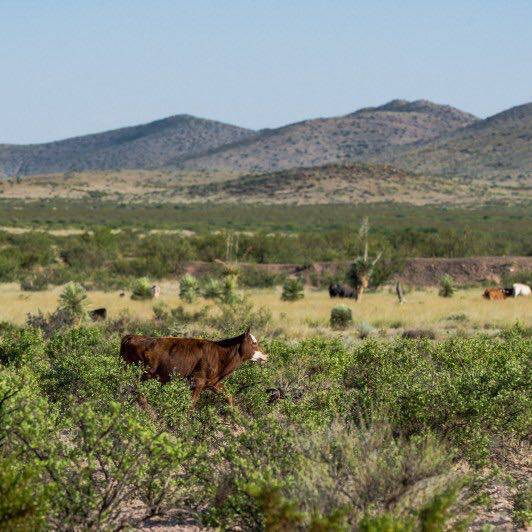 El Palmar Ranch - Janos, Chihuahua, Mexico
El Palmar Ranch - Janos, Chihuahua, Mexico 
El Palmar Ranch - Janos, Chihuahua, Mexico
It is not often one has the opportunity to purchase a ranch with all the quality characteristics of good weather, large size, quality production, and excellent location. Accessed immediately upon driving across the border from the United States makes it one of a kind. This high Chihuahua ranch lies in a very productive region with gentle valleys and rolling hills and represents some of the most premier grazing country available on the market for the serious cattle rancher.
Location: The ranch is located in the Municipality of Janos, Chihuahua, Mexico about 167 miles west of El Paso, Texas, 247 miles southeast of Tucson, Arizona, and 97 miles southwest of Deming, New Mexico. While actually several large ranches, Nogales and El Palmar, they are marketed and sold as one ranch, only a few miles south of the Mexican/American border in the boot heel of southwest New Mexico. The ranches are accessed primarily via Mexican Highway 2 from the south and New Mexico Highway 81 from the north.
Acreage: Combined, El Palmar and Nogales are spread over approximately 85,002 total acres (34,399 hectares), and are located in some of the best cattle production areas in north-central Mexico. The elevation ranges primarily between 4,500 – 5,400 feet.
Approximately 4,942 acres (comprised of two separate areas) is irrigated farmland with six center pivots on irrigation wells. The 4,942 irrigated acres can be purchased for $10,000,000.
Water: Most of the precipitation falls during the monsoon season, which is July through September. Annual precipitation is about 12 inches rain with an additional 5 inches of snow. El Palmar ranch has 21 wells that are serviced by pumpjack, windmill and submersible pumps.
Stocking: Weather, location, terrain, a wide variety of grasses and vegetation all combine to support an operation for cow/calf, stocker or combination. The stocking rate is about 40 acres per AU. Most of the cattle crossed through the border into the United States originate in Chihuahua, and cattle from the Berrendo area cross into New Mexico at Columbus or Santa Teresa.
Terrain & Vegetation: The terrain is a rolling landscape, with mostly grassland, similar to the far West Texas area of the Davis Mountains. This gives the northern regions of the state about a 7:1 proportion of grasslands to agricultural lands. Premier side oats, and gramma grasses, considered to be drought tolerant, provide excellent grazing. Tabosa grass is also very prolific on these ranches.
Weather: Winters are cool and sunny with a January average high of 45 °F and occasional snowfalls. Summers are warm with June being the warmest month with an average high of 72 °F. The climate in the state of Chihuahua, Mexico, is semi-arid to arid. The rainfall pattern is intermediate in the border belt with the peak months of precipitation being July through September. The rest of the months are considered dry periods in the state of Chihuahua. The growing season typically begins in July with the monsoon rains and lasts until the first freeze, normally in October or November. If there is fall and winter moisture a variety of late winter and spring plants are grown including filaree and other high protein plants.
Minerals: The minerals are owned by the country of Mexico.
Ranching in Mexico: The Mexican Constitution regulates the ownership of the land and establishes that “…in a zone of 100 kilometers along the border or 50 kilometers along the coast, a foreigner cannot acquire the direct ownership of the land.” These areas are known as the “Restricted or Prohibited Zones”. However, the latest Mexican Foreign Investment Law, which became law in 1993, makes allowances. Non-residential property can be purchased through a Mexican corporation which can be, under certain conditions, 100% foreign-owned, with a provision in its by-laws that the foreigners accept to be subject to Mexican laws and agree not to invoke the laws of their own country.
History: The Casas Grandes/Janos region of northern Chihuahua has long been recognized as a place of great cultural diversity. Over the years, the region has been occupied by the inhabitants of Paquimé, Tarahumaras, Spaniards, Sumas, Apaches, Americans, Chinese, and of course, Mexicans. Álvar Núñez Cabeza de Vaca was the first Spaniard to visit the area. Two additional groups, Mennonites and Mormons, came south into Mexico to avoid persecution for their religious and cultural practices. Their methods of farming are very advanced, using the latest technology and boosting the agricultural economy in the region.
Region: Janos is a municipality located in the extreme northwest part of Chihuahua, on the border with the Mexican state of Sonora and the U.S. states of Arizona & New Mexico. As of 2010, the municipality had a total population of 10,953. Founded around 1580 by Franciscan missionaries, the municipal seat is the town of Janos. Casas Grandes, located about 37 miles south of Janos, is the most important archaeological zone in Chihuahua. The great Puebloan community of Paquimé was the center of the Casas Grandes culture for over 300 years, reaching the peak of its power in the 13th century. It is believed that the population of the city reached 10,000, with most inhabitants living in five- and six-story “apartment” buildings. Featuring small T-shaped doors, a ceremonial area, temple structures, a ball court, ceremonial pyramids and a cross-shaped mound with perfect astronomical orientation, the Paquimé ruins spark wonder and admiration.Between AD 300 and 1300 along the wide, fertile valley on the San Miguel River the Casas Grandes (Big Houses) culture developed into an advanced civilization. The Casas Grandes civilization is part of a major prehistoric archaeological culture known as Mogollon which is related to the Ancestral Pueblo culture. Paquimé was the center of the Casas Grandes civilization. Extensive archaeological evidence shows commerce, agriculture, and hunting at Paquimé and Cuarenta Casas (Forty Houses)
Chihuahua: Chihuahua continues to have one of the fastest-growing economies in Mexico. Because of its proximity to the United States, just south of New Mexico and part of Texas, Chihuahua is strategically important to Mexico. Accounting for 12.6% of the land in Mexico, it is the largest state, with an area of 95,543 square miles, slightly larger than the United Kingdom.
CO-LISTED with James Sammons III, Briggs Freeman Sotheby’s International Realty

